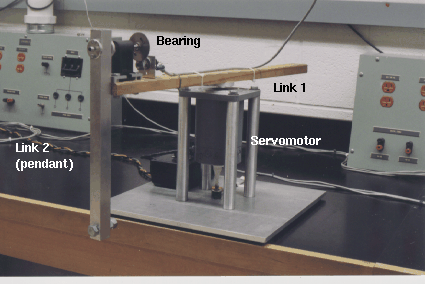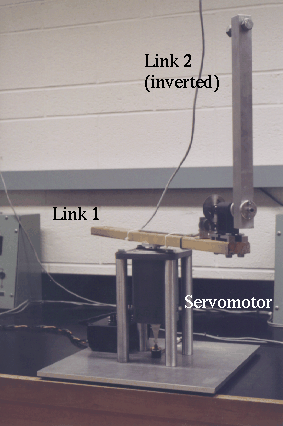The rotating inverted pendulum is a excellent test bed for nonlinear control theory. It is similar to the classic inverted pendulum control experiment, in that we seek a feedback control law that balances Link 2 in its unstable, inverted position. However, instead of the first link undergoing linear translation, our first link rotates. This makes the control problem more difficult, because there is a centripetal force acting on Link 2, proportional to the square of the velocity of Link 1, and this force destabilizes Link 2, just like gravity. Both the centripetal force and the gravity force act in a nonlinear manner.
The first photo below shows the mechanism in its stable, pendant
position. The mechanism is underactuated because a single
motor actuates only Link 1; the bearing connecting Link 1 and 2 is not
actuated.

The second photo, shown below, shows the pendulum in its unstable,
inverted position. Here, a controller is computing the motor voltage
200 times per second to keep Link 2 balanced. The controller is a
nonlinear approximate feedback linearization, and is implemented on a
TI 320C30 Digital Signal Processor, which is hosted by a 486-based PC.
This nonlinear controller provides superior performance when compared
to a linear controller because the latter can not compensate the
destabilizing centripetal term. This means that the nonlinear
controller can move the inverted pendulum (turn Link 1) to a new
position faster than a linear controller, as the plots below show.

Click here to see experimental results.
Last updated August 17, 1995.Scott Bortoff, bortoff@control.toronto.edu